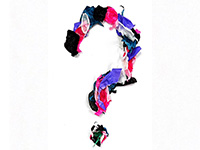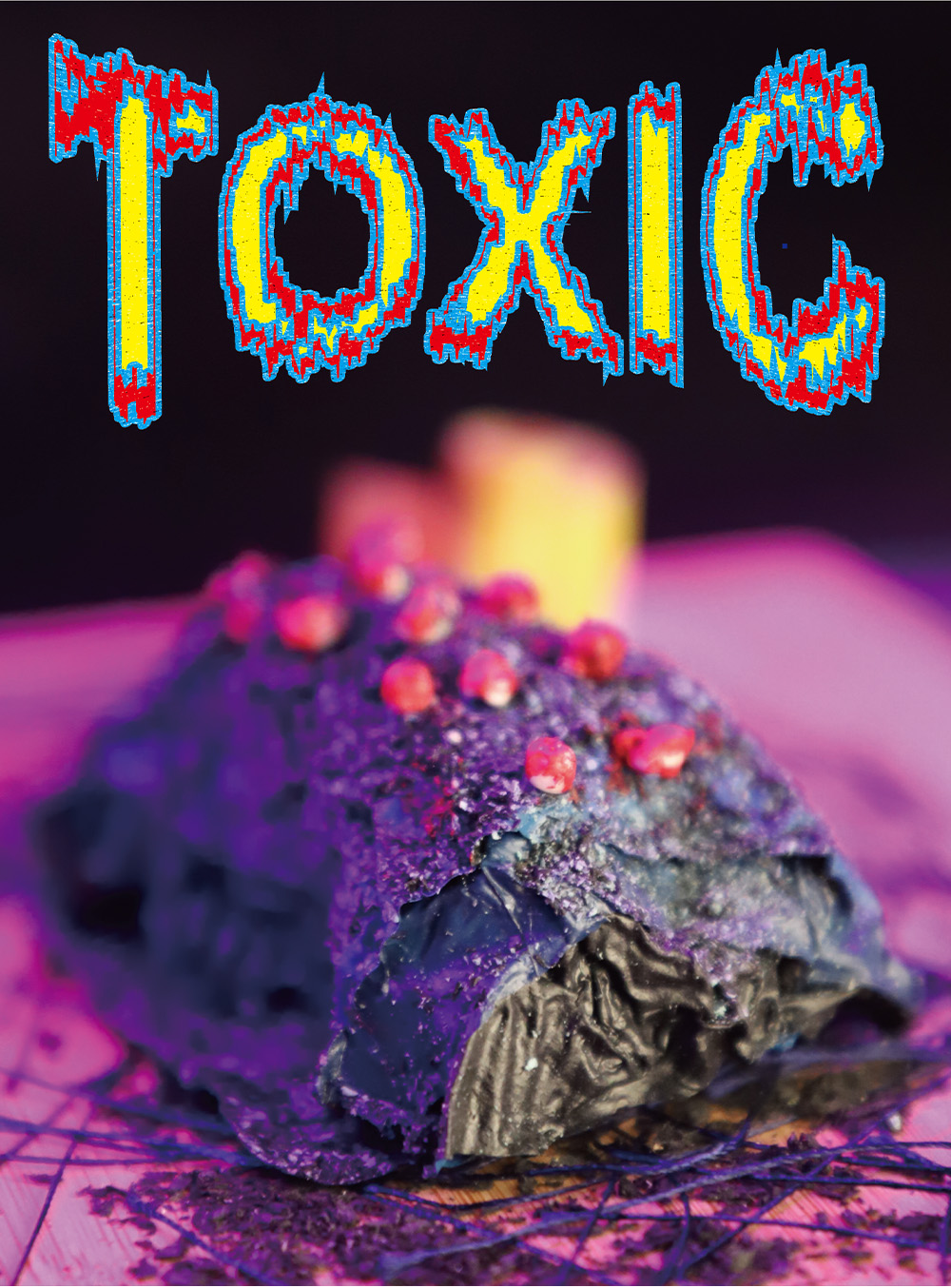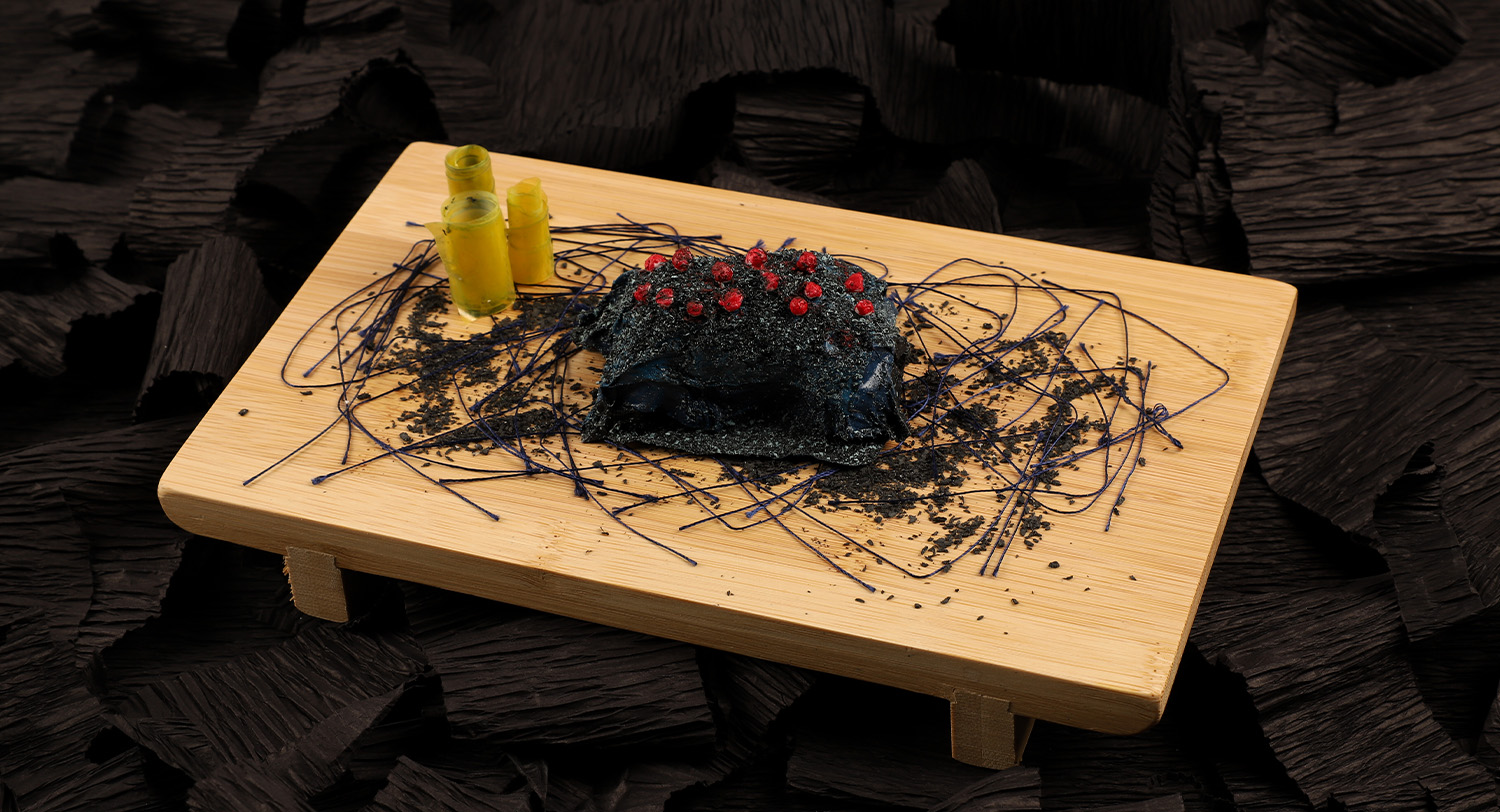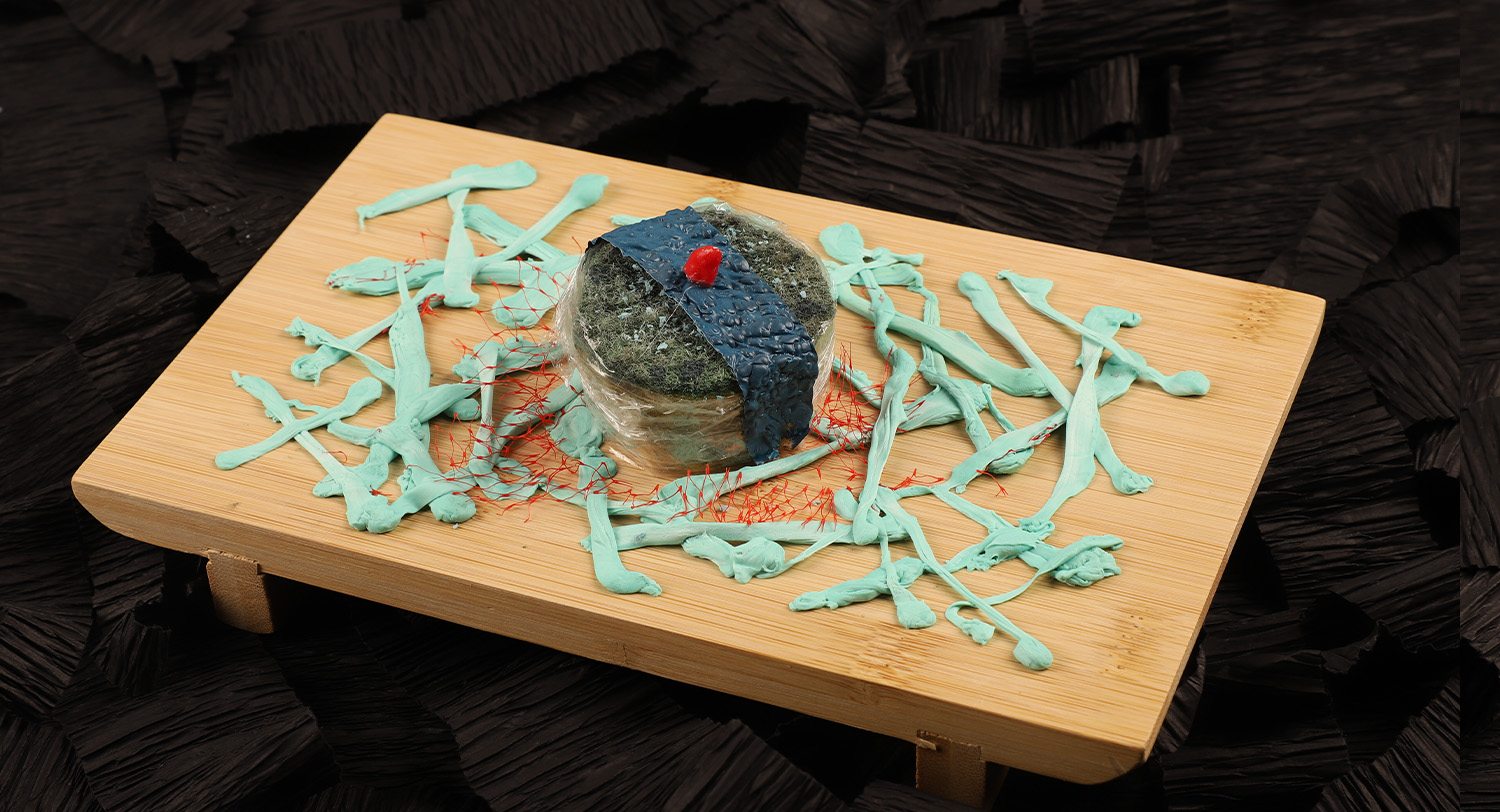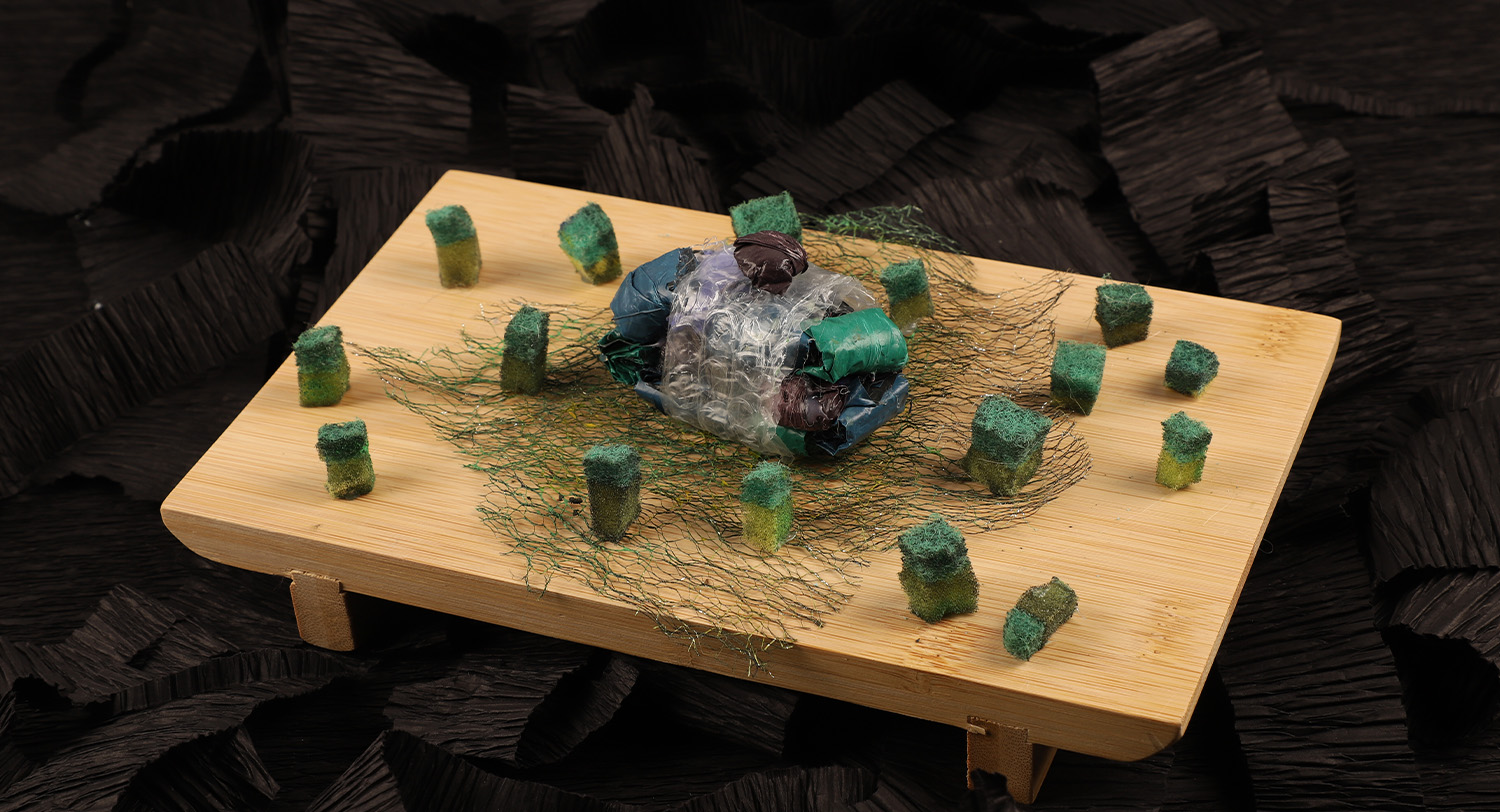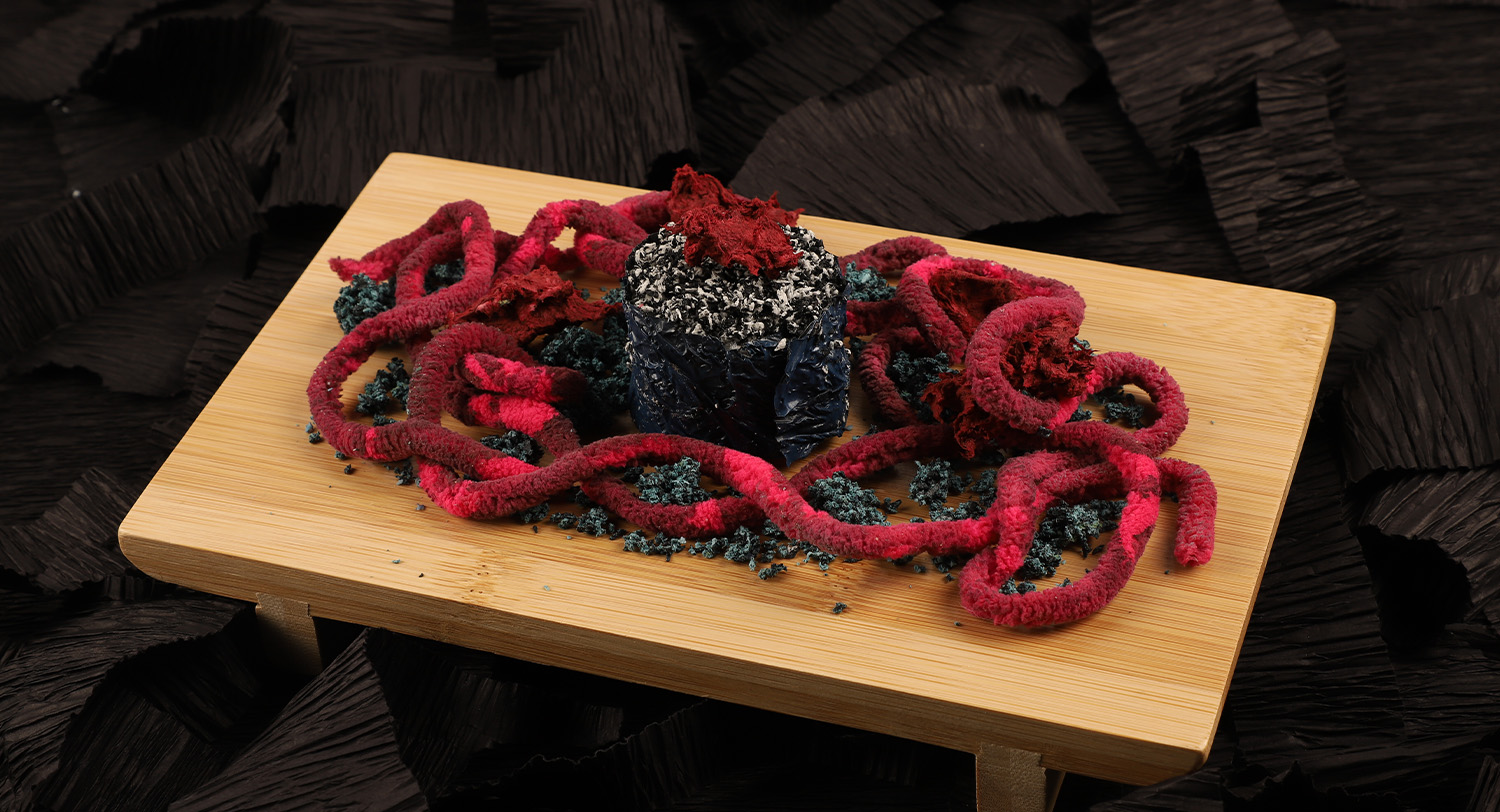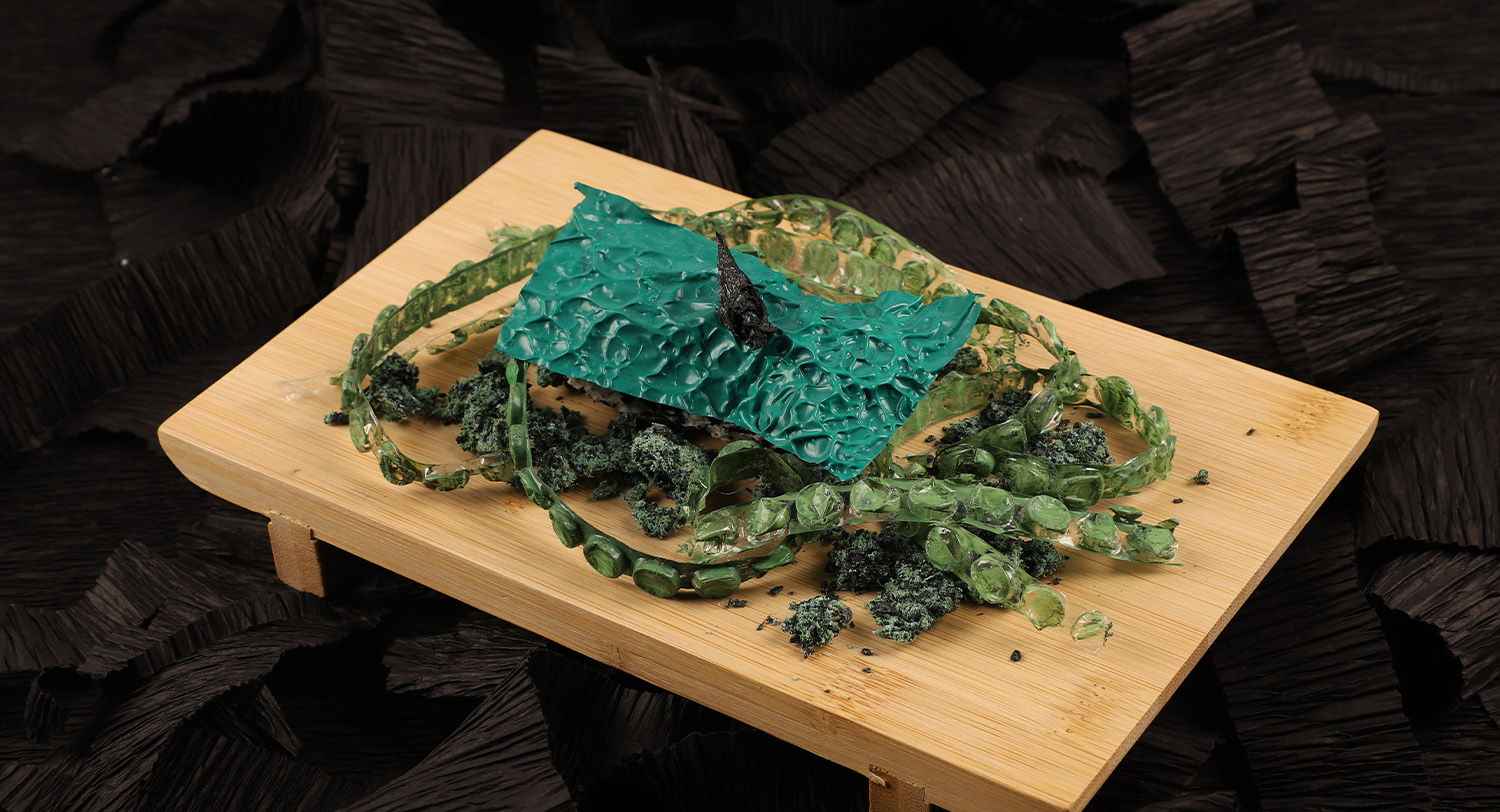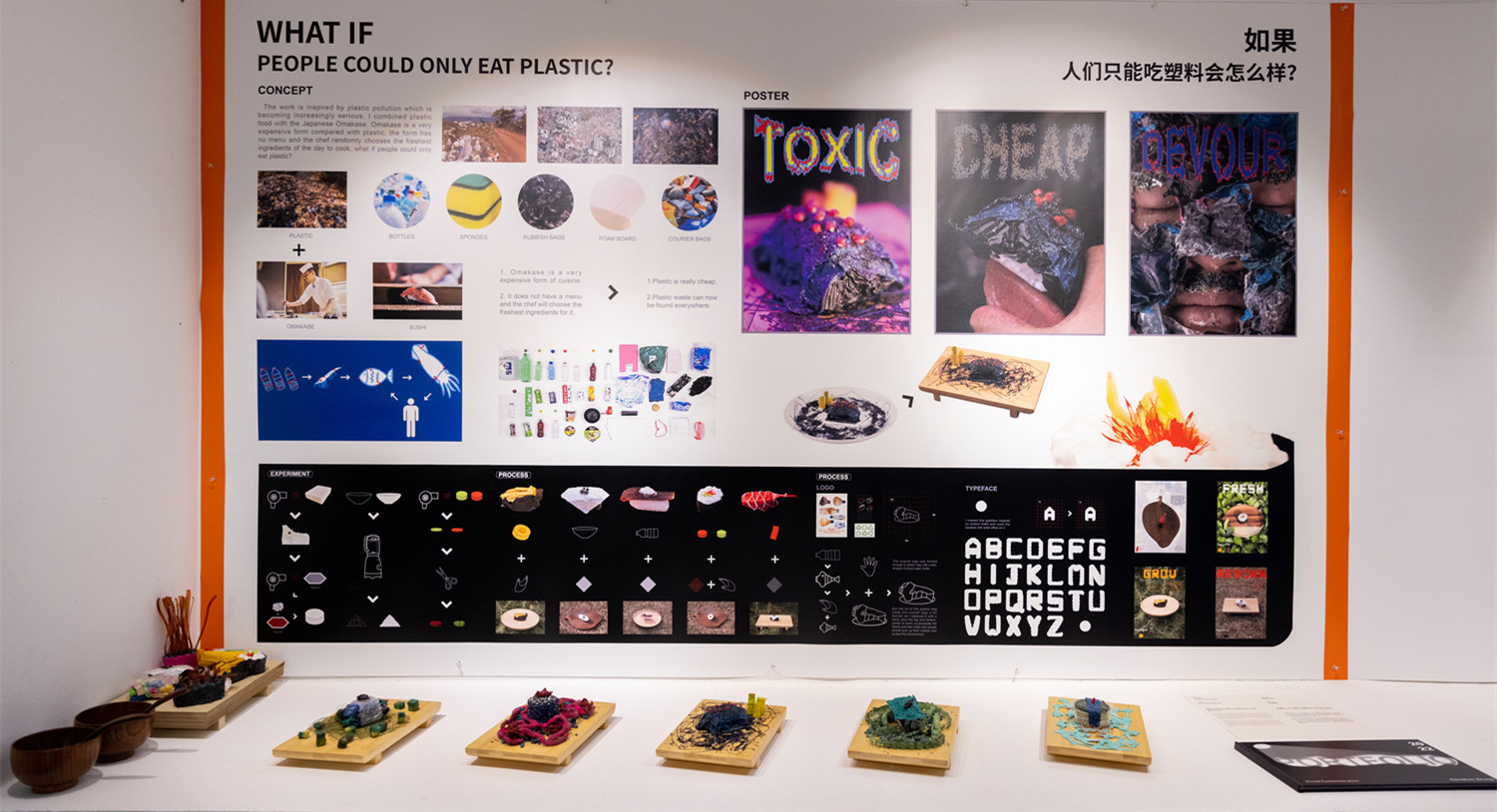作品故事
我希望通过这个作品去提醒人们关注塑料污染的问题。因为每年全球会消耗三千万吨塑料,我们没有节制地使用塑料,而这些塑料会分解成微塑料存在空气里、土里、海里,最后返回人们的体内,所以我想使用食物结合塑料去警示人们。
我结合日本的用餐形式Omakase使用塑料进行了创作。首先,这是一个非常昂贵的形式,与极其便宜的塑料形成对比。其次,Omakase 这个形式是没有菜单的,厨师会选择当日最新鲜的食材去进行烹饪,但设想如果在极端的环境下,最新鲜的食材全是由各种塑料组成,而这些食材都来自每个人消耗的塑料,那么谁才是厨师?
This work I want to talk about plastic pollution. Up to 30 million tonnes of plastic are emitted worldwide each year. We use a lot of plastic without restrain, as a result, the plastic will become microplastics after dissolution in air, soil and ocean. Finally, it will back to our body. So I wanted to use food as a medium to warn people.
I combined plastic food with Japanese Omakase which is a very expensive form of eating.The chef will chose the freshest ingredients of the day to cook accordingly. If in extreme circumstances, the freshest ingredients are made up from all kinds of plastic which consumed by human, then who is the chef?
